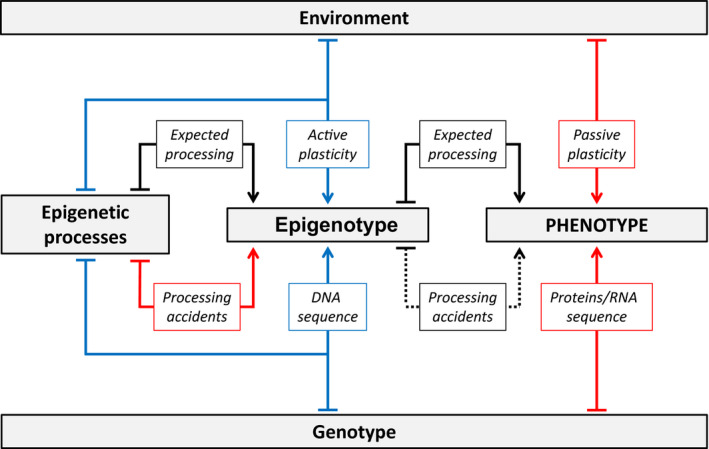FIGURE 1.

Sources of epigenetic and phenotypic variation. The formation of any phenotype resulted from a series of processes starting with gene expression. In a given environment, proteins and RNAs encoded by the genotype are expressed through a specific epigenotype. However, the realized phenotype can be different from the genetic expectations because of alterations by the environment (phenotypic plasticity). Red lines refer to the pure “environmental” (passive plasticity) and “genotypic” components. The epigenotype can be also modified by the interactions (blue lines) between epigenetic processes and genotype (obligated and facilitated epimutations) or “epigenetic processes and environment” (active plasticity), resulting in modifications of the “phenotype.” Finally, processing accidents can modify the epigenotype (pure “epigenetic” component) or the phenotype (developmental accidents). Processing accidents are stochastic (unpredictable results), but their rate of occurrence may be affected by genotype and environment. Epigenetic processes included the different components encoded by the genome and are therefore submitted to genetic and environmental factors
